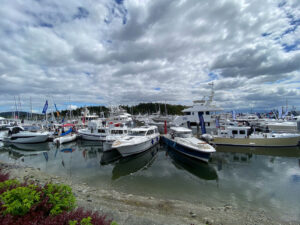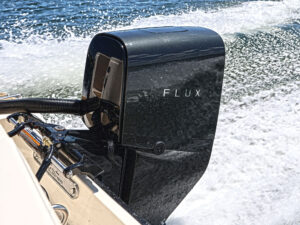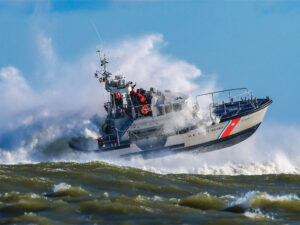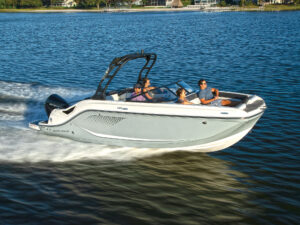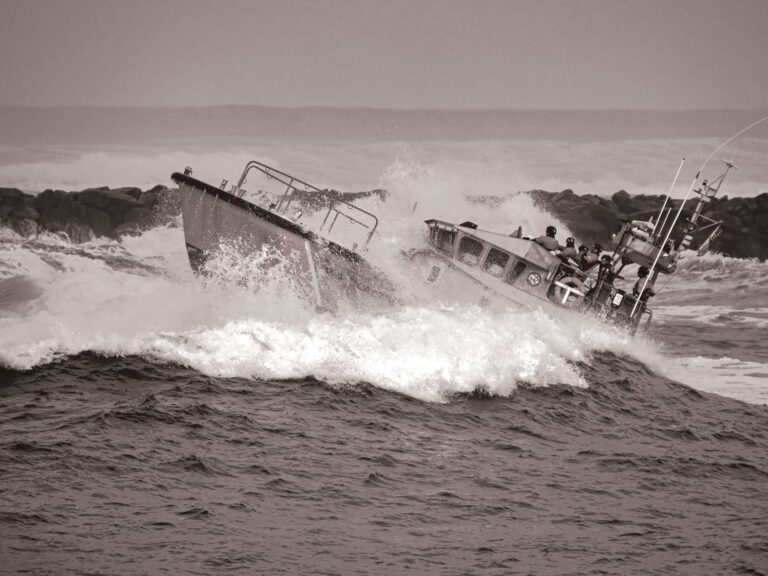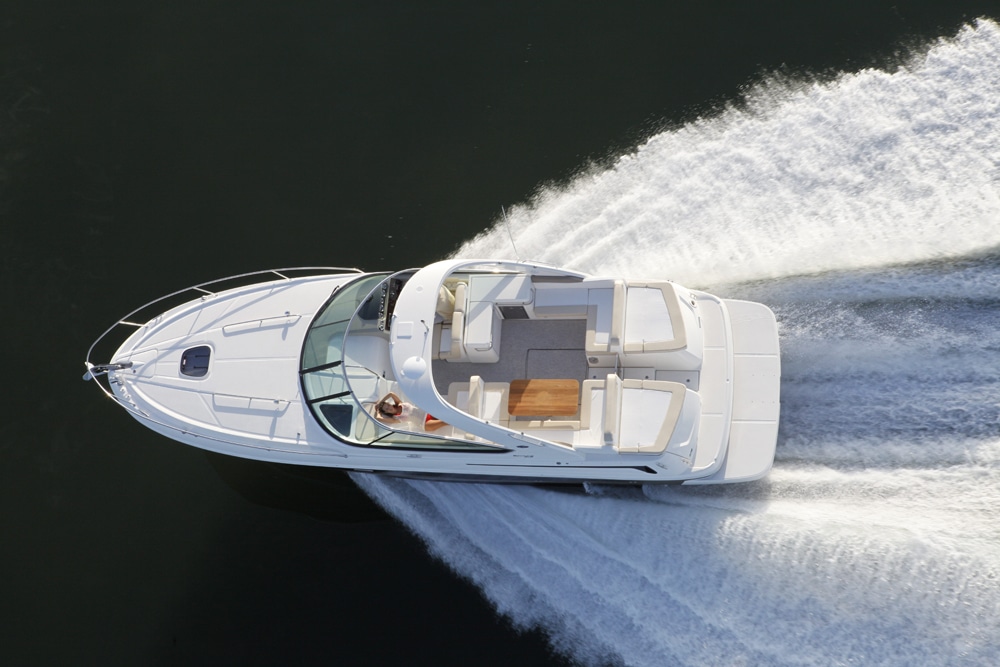
Sea Ray 370 Venture
Beam: 11’3″
Draft (max): 3’0″
Displacement (approx.): 15,432 lb.
Transom Deadrise: 18 degrees
Bridge Clearance: 12’9″
Max Cabin Headroom (when applicable): 6’5″
Fuel Capacity: 200 gal.
Max Horsepower: 600
Available Power: Twin Verado 300 hp outboard motors
More Information: searay.com Ryan Streveler
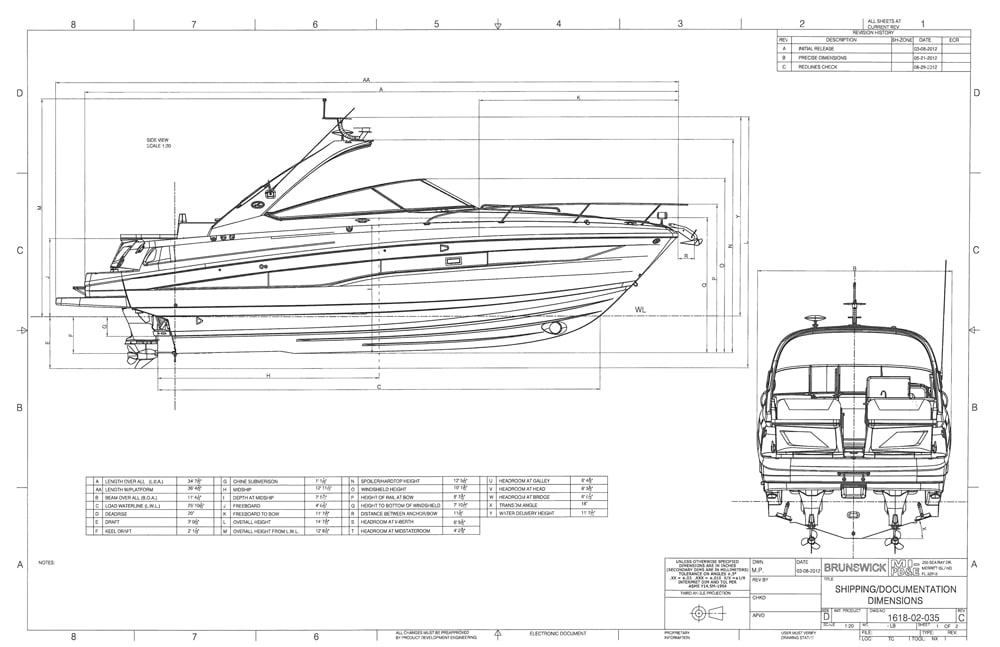
Sea Ray 370 Venture
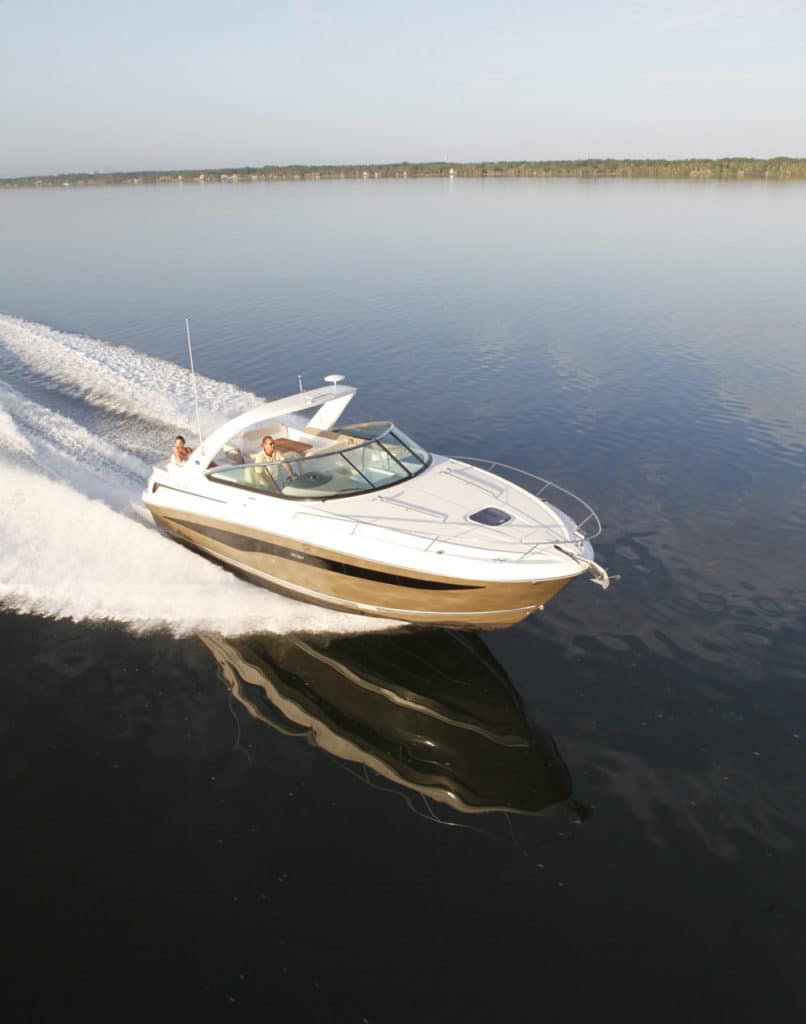
Sea Ray 370 Venture
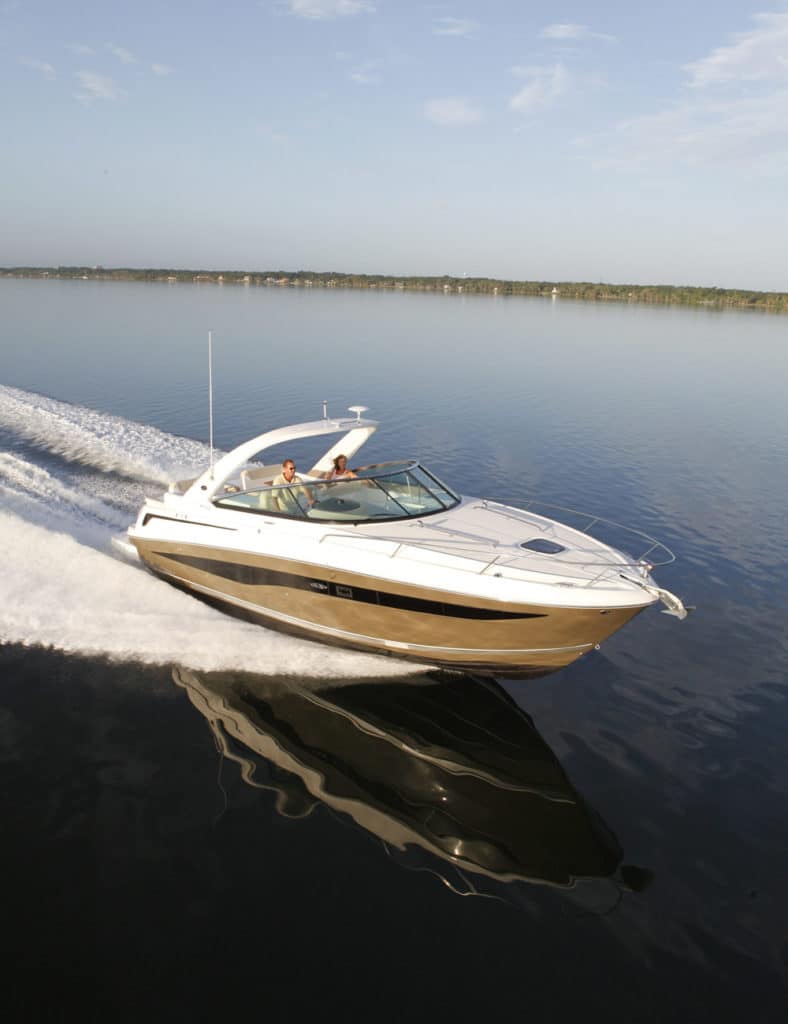
Sea Ray 370 Venture
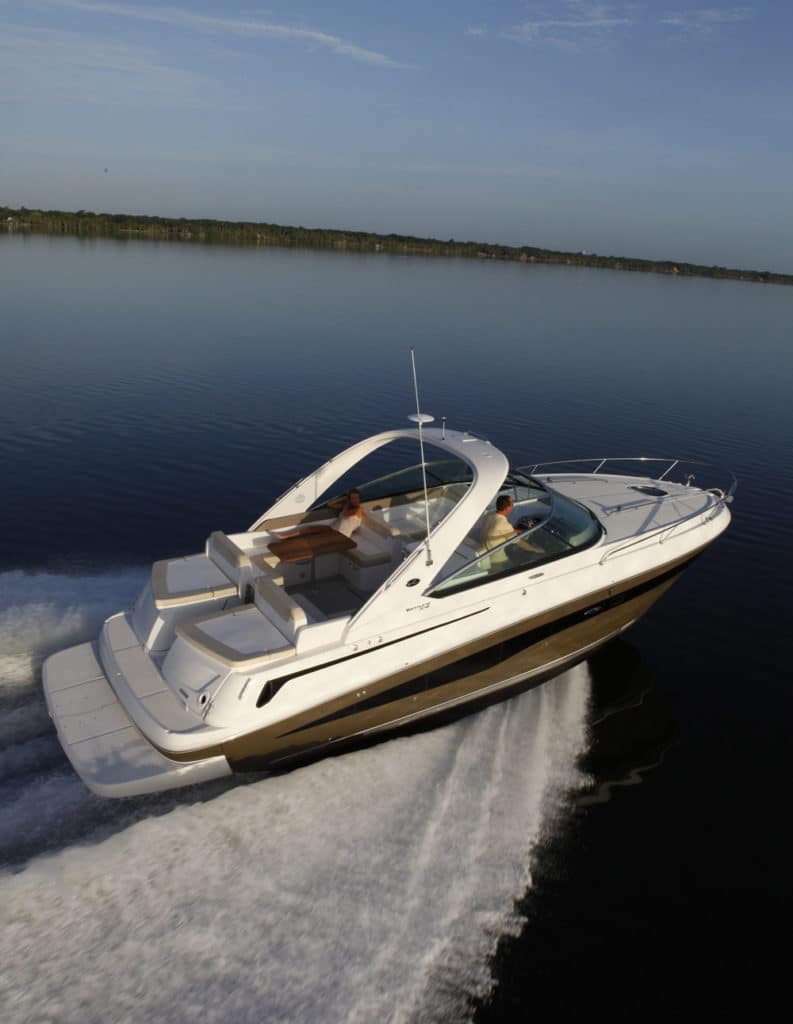
Sea Ray 370 Venture
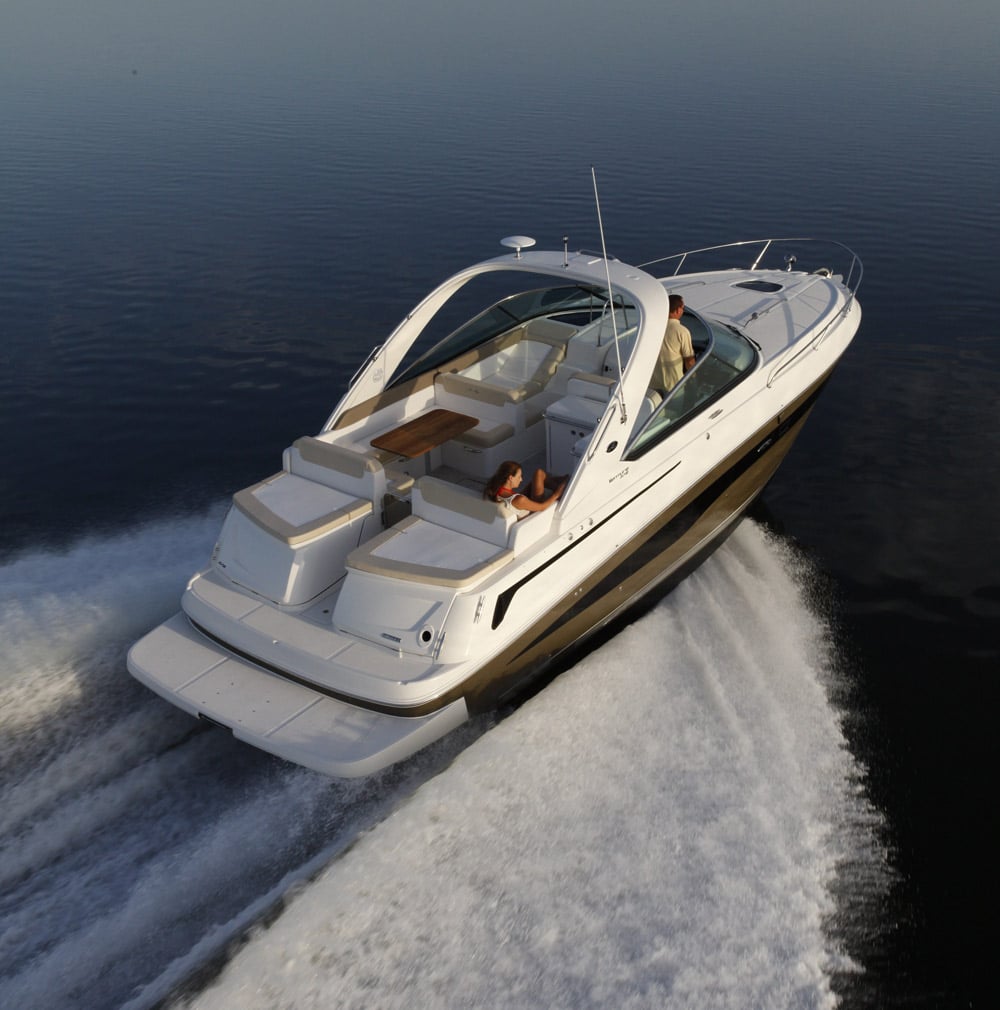
Sea Ray 370 Venture
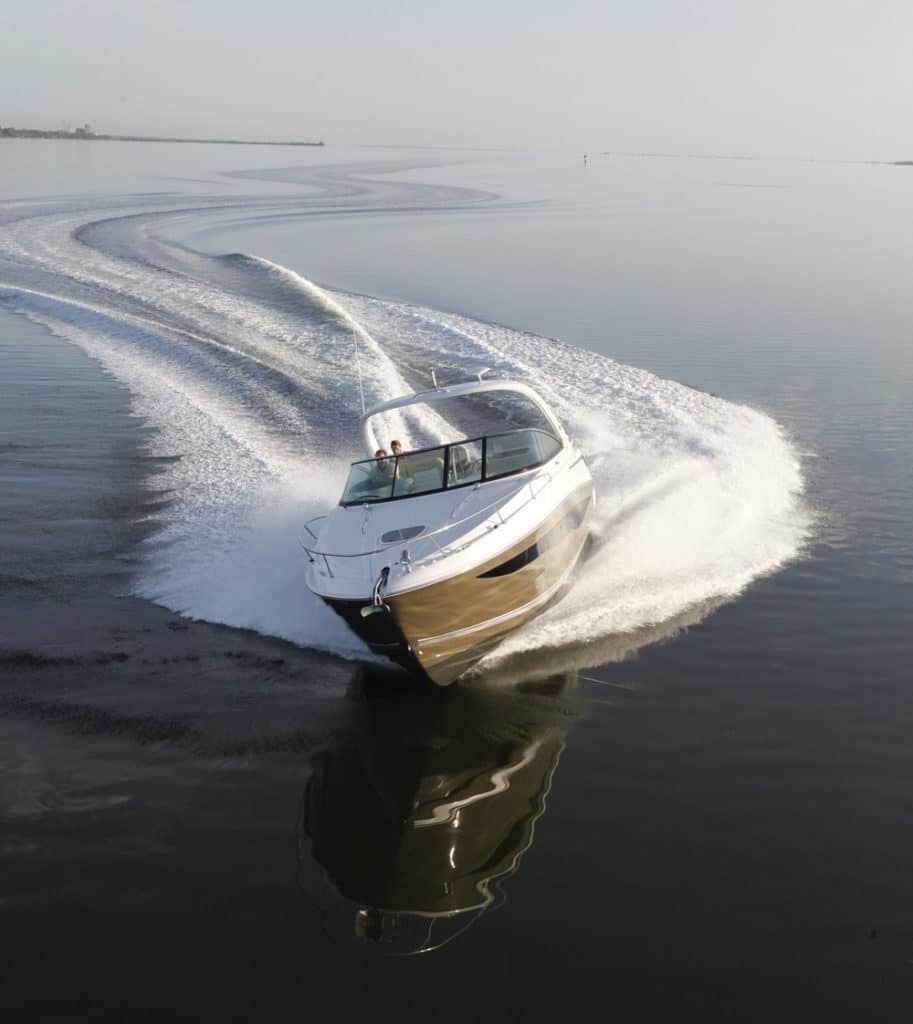
Sea Ray 370 Venture
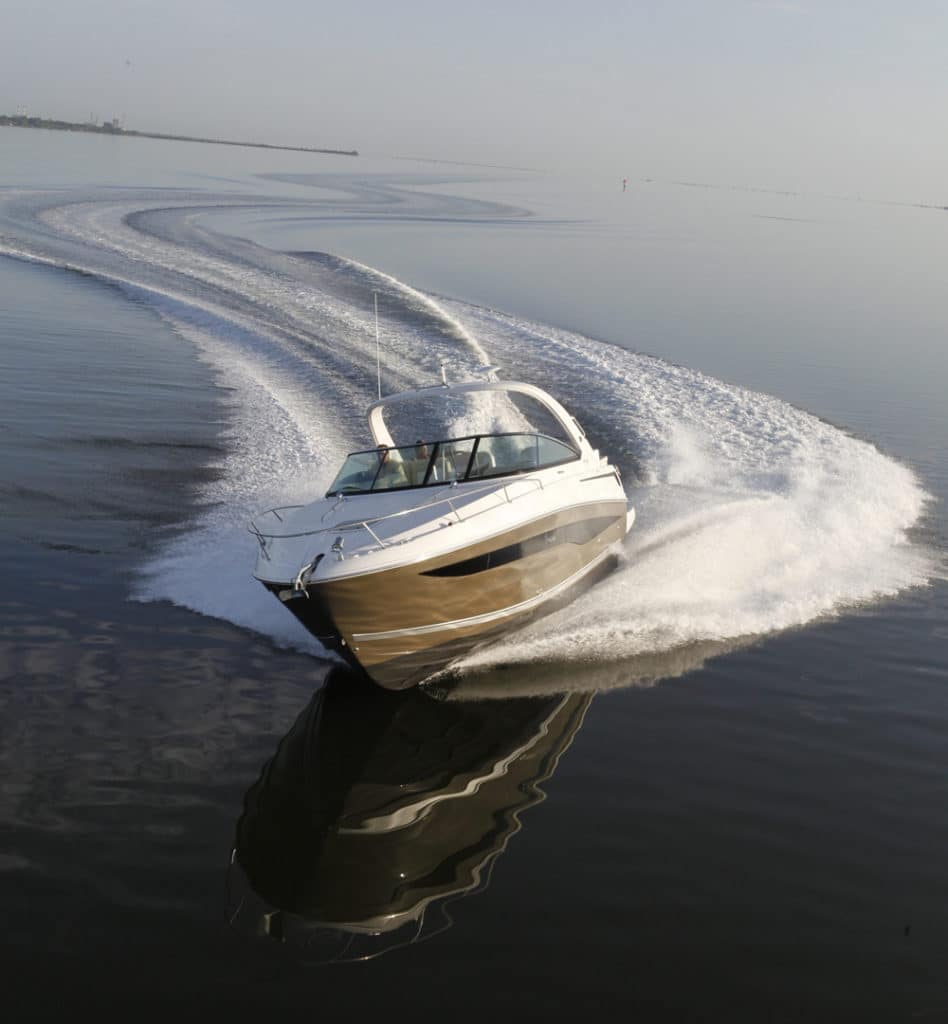
Sea Ray 370 Venture
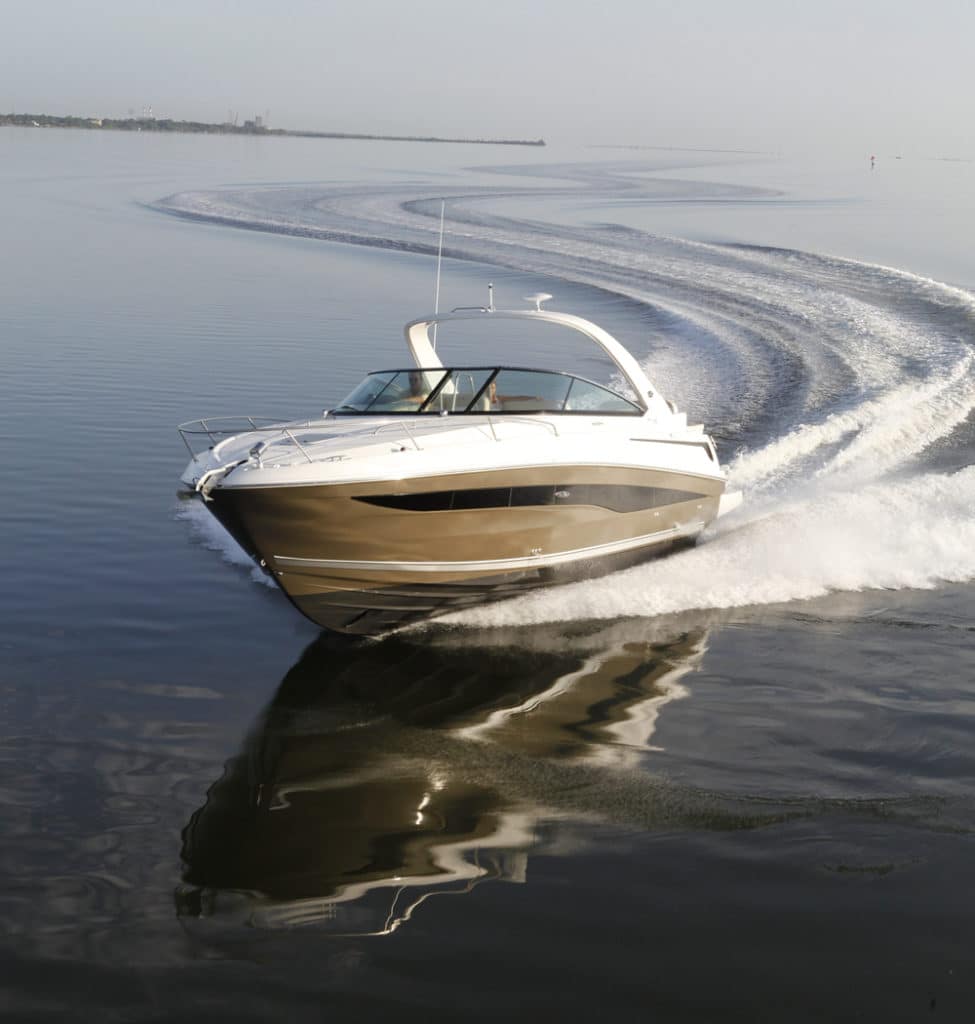
Sea Ray 370 Venture
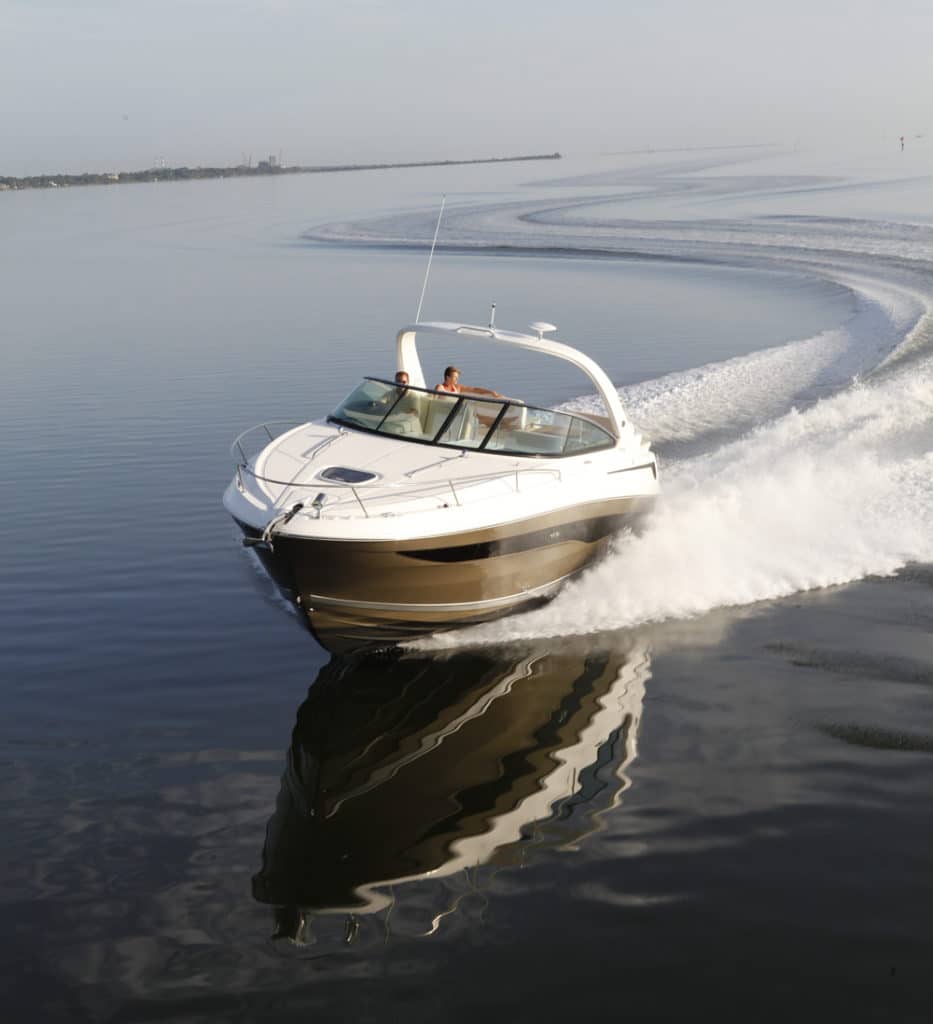
Sea Ray 370 Venture
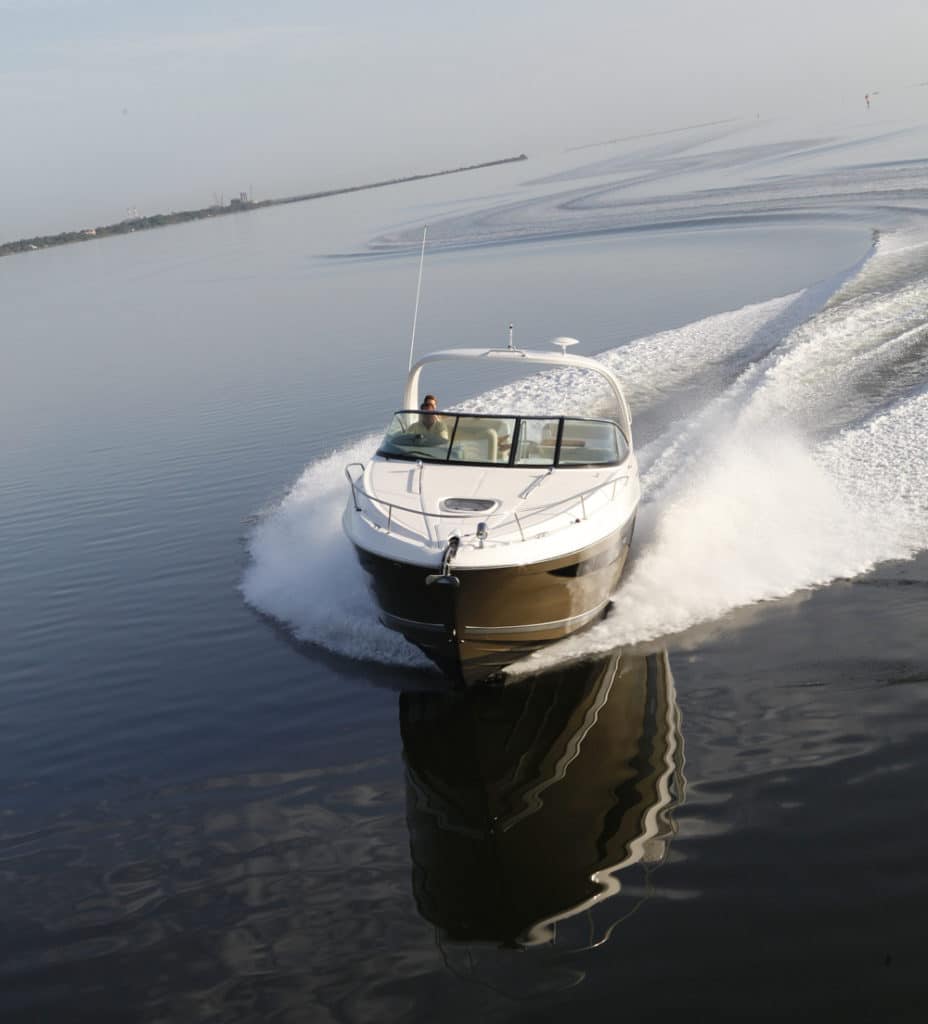
Sea Ray 370 Venture
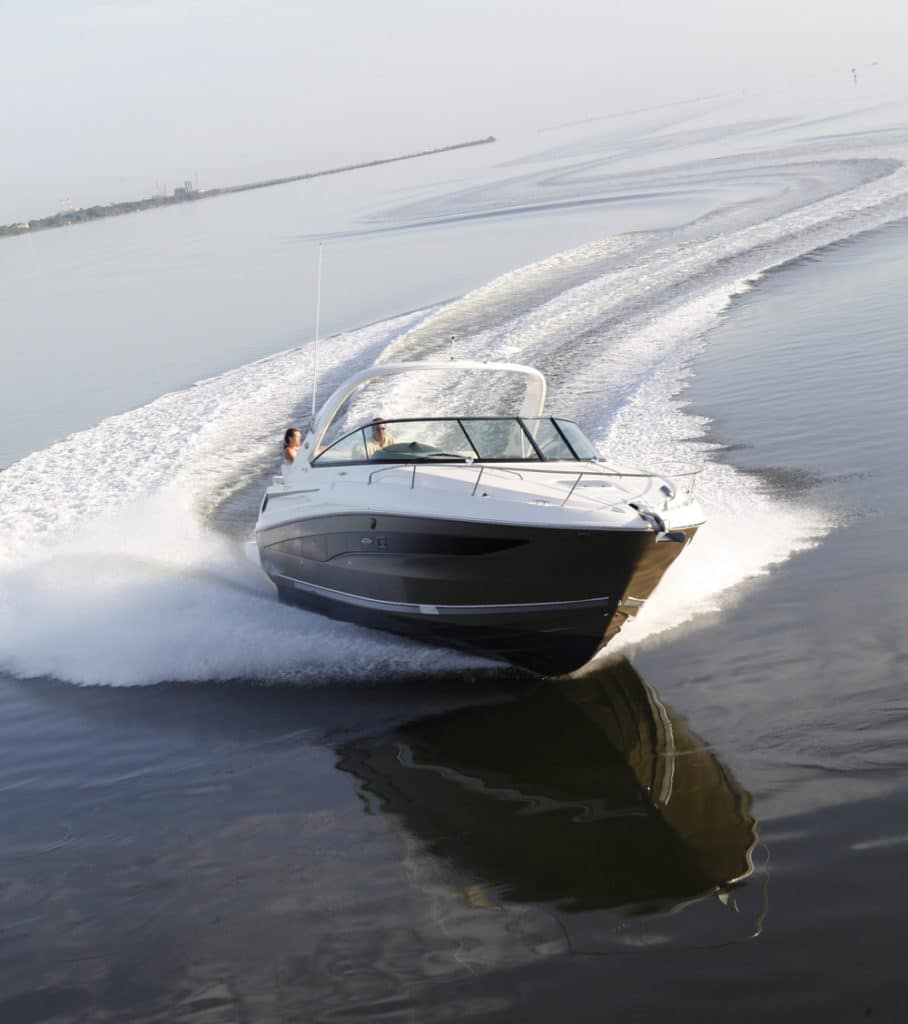
Sea Ray 370 Venture
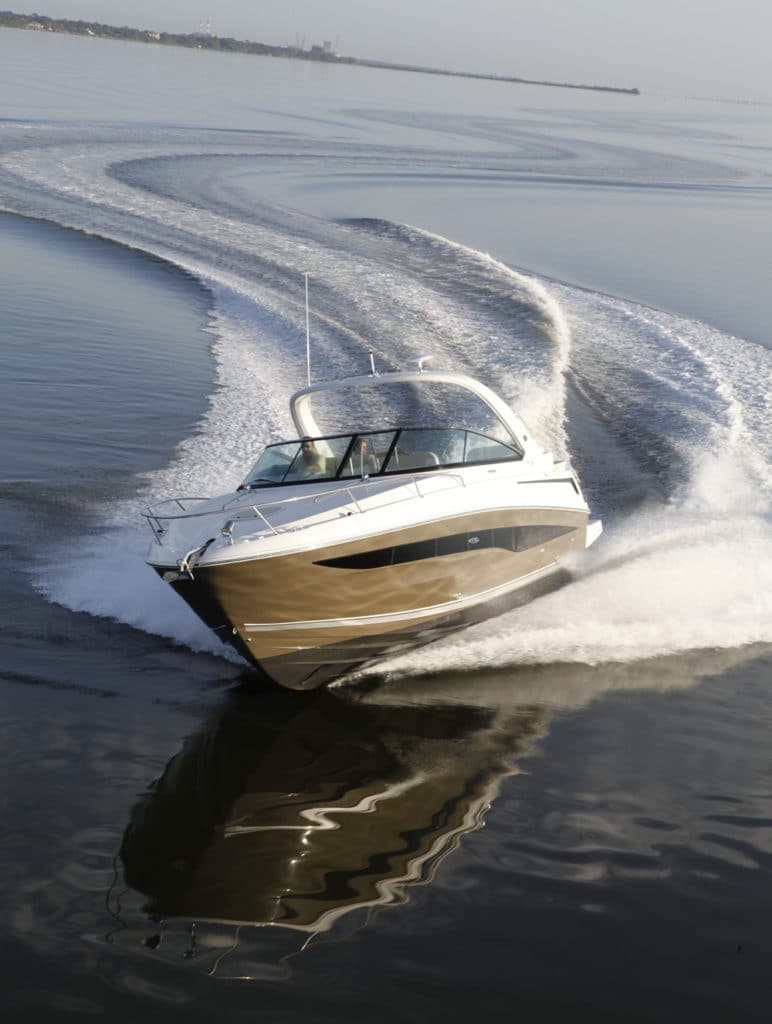
Sea Ray 370 Venture
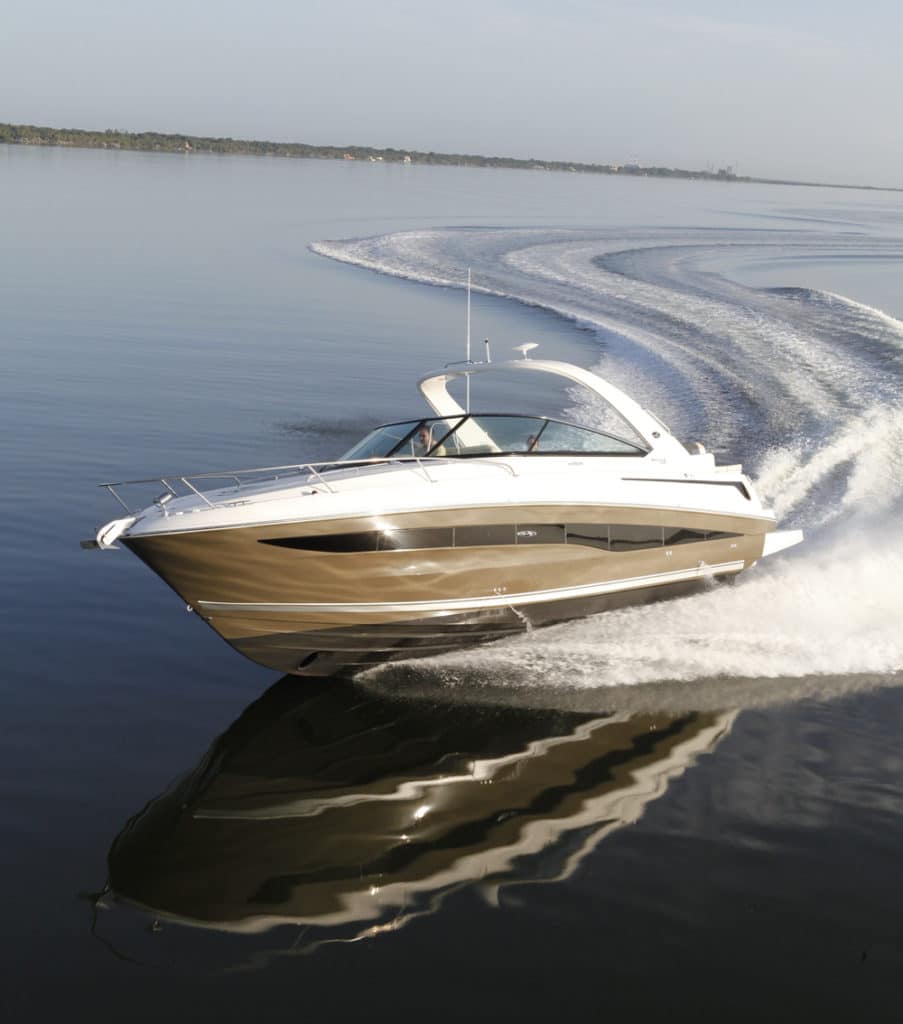
Sea Ray 370 Venture
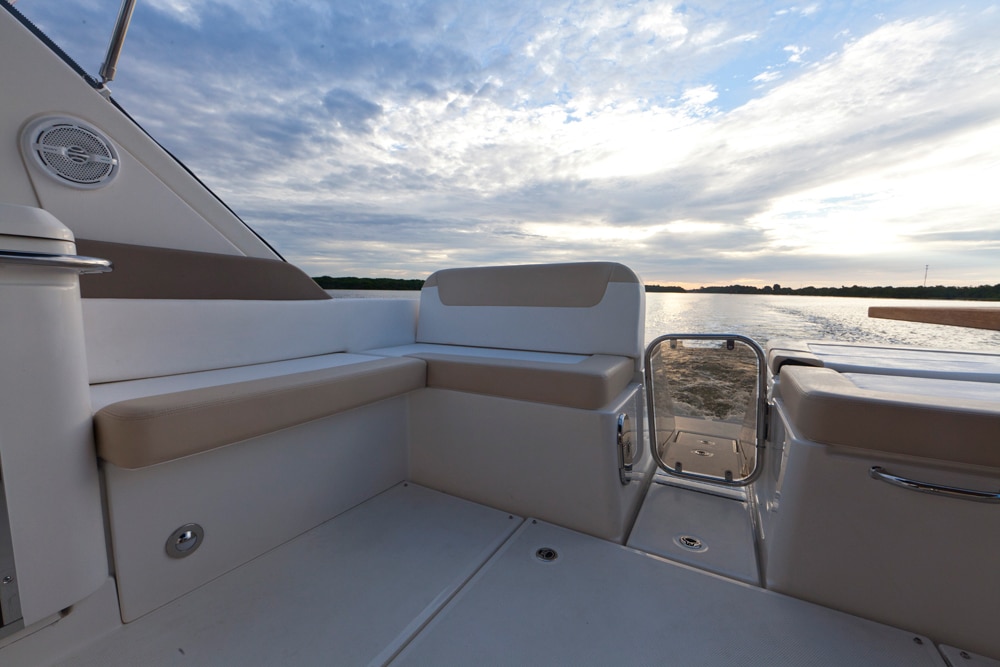
Sea Ray 370 Venture
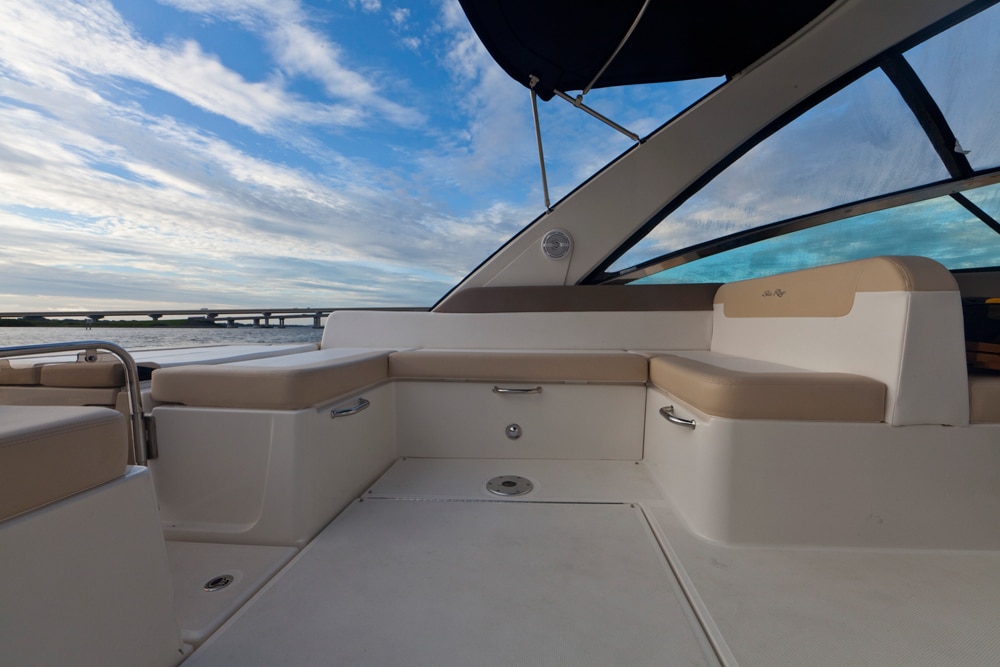
Sea Ray 370 Venture
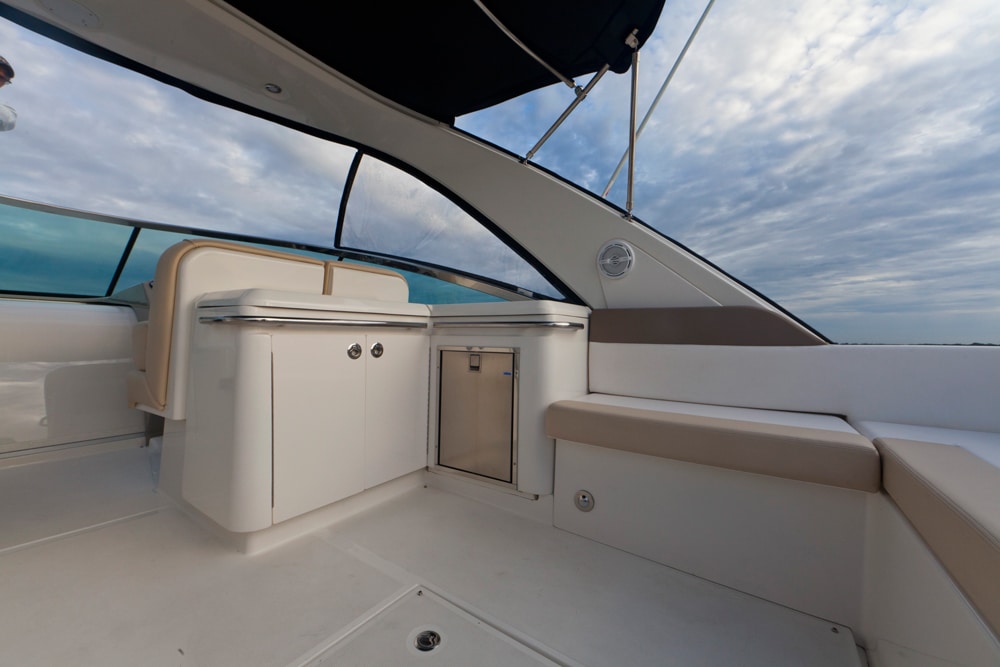
Sea Ray 370 Venture
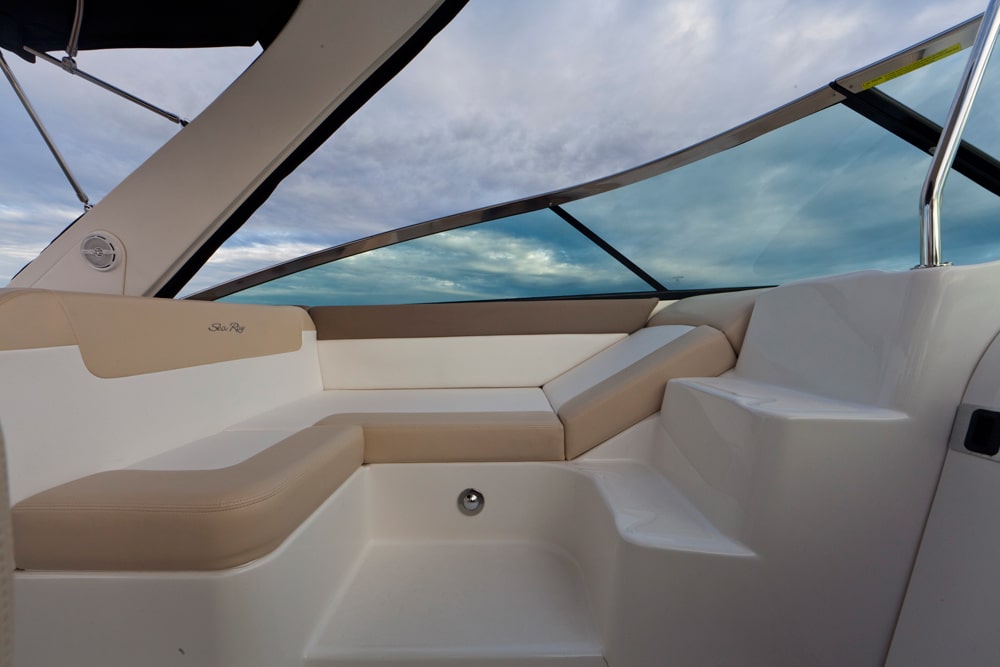
Sea Ray 370 Venture
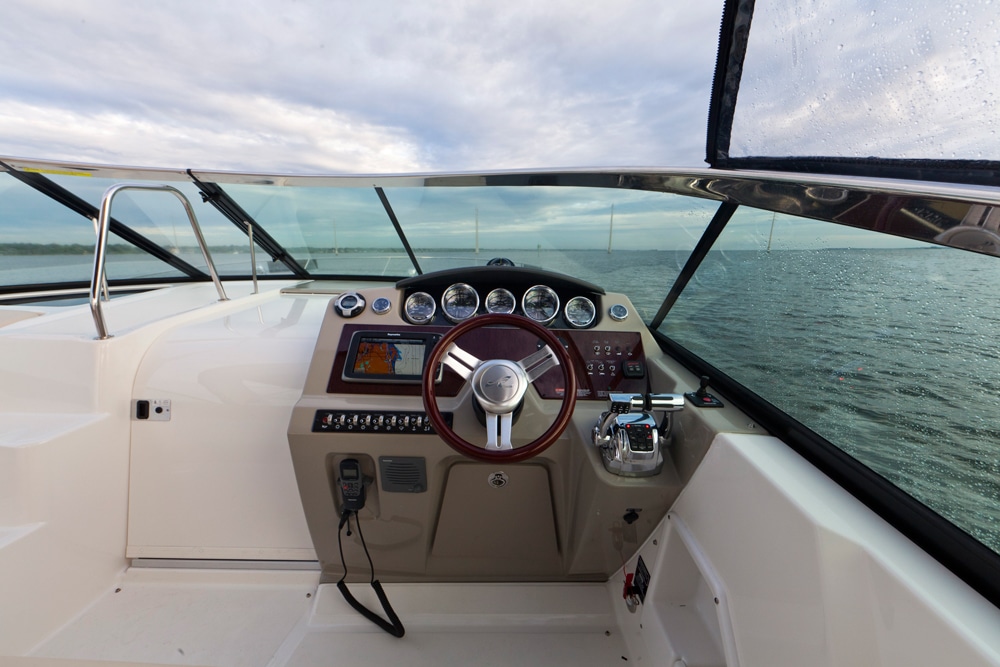
Sea Ray 370 Venture
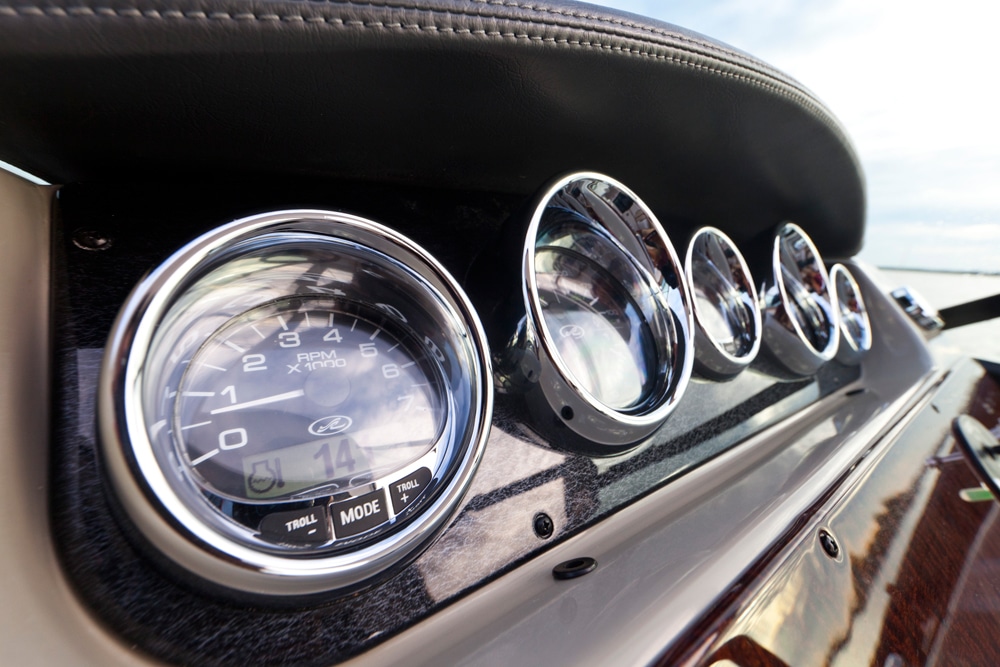
Sea Ray 370 Venture
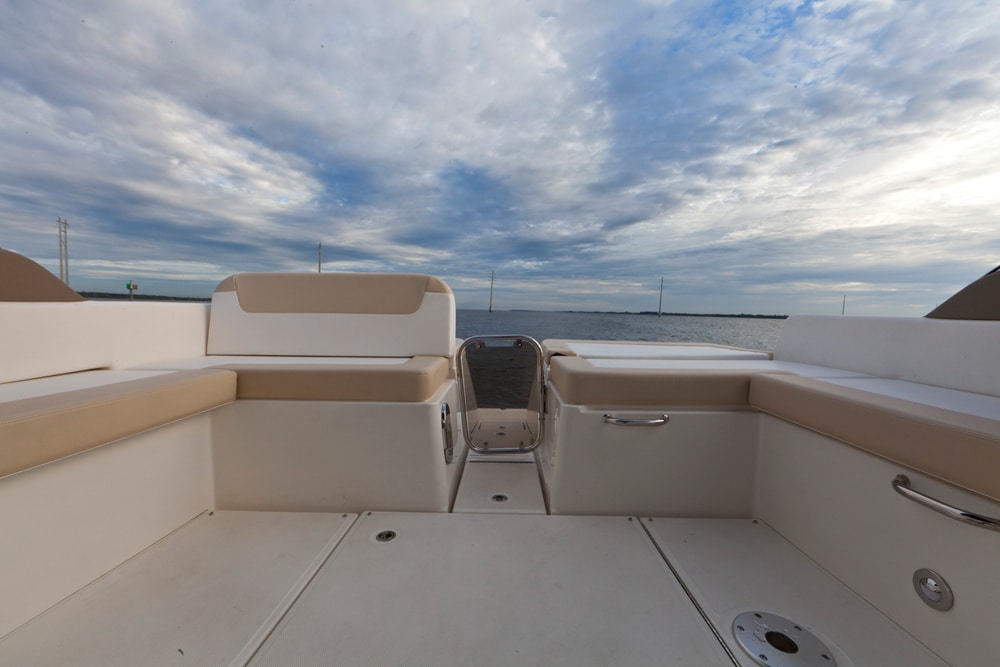
Sea Ray 370 Venture
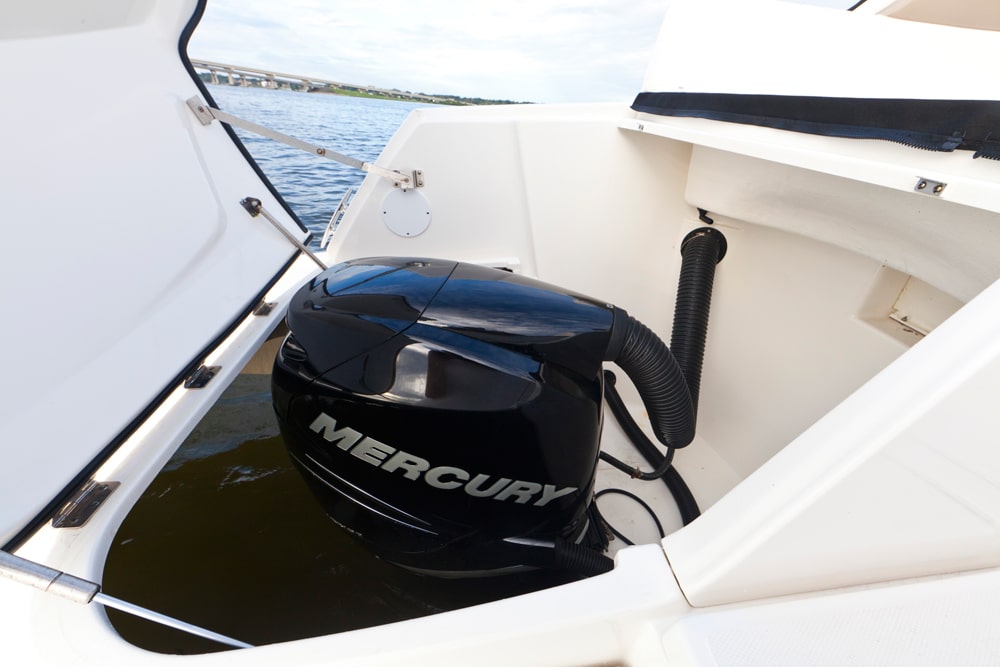
Sea Ray 370 Venture
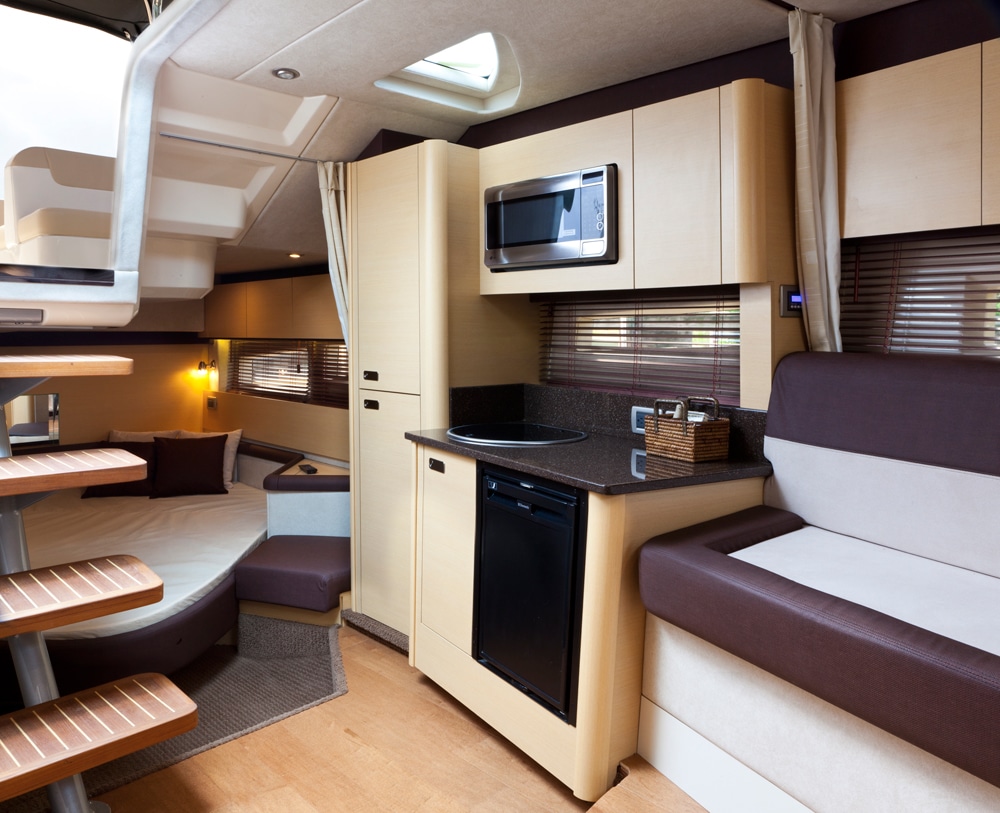
Sea Ray 370 Venture
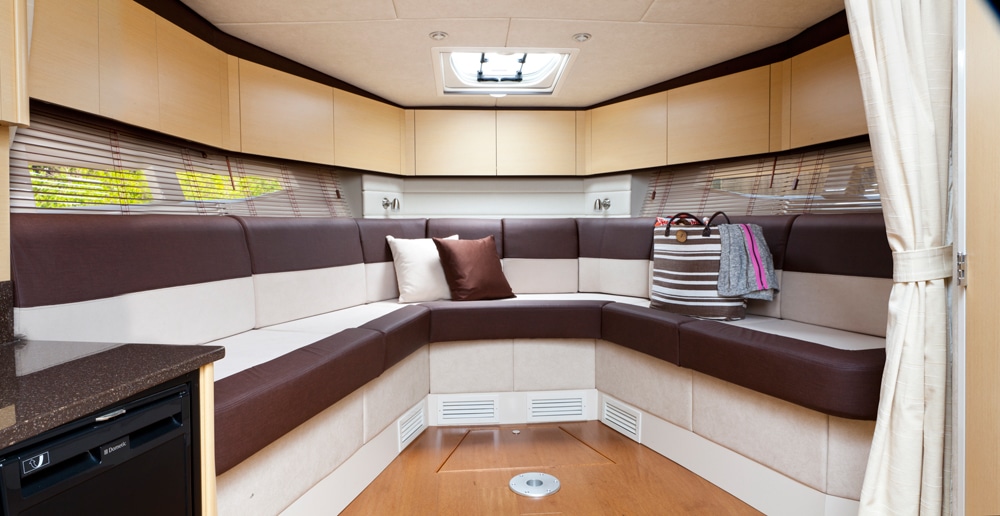
Sea Ray 370 Venture
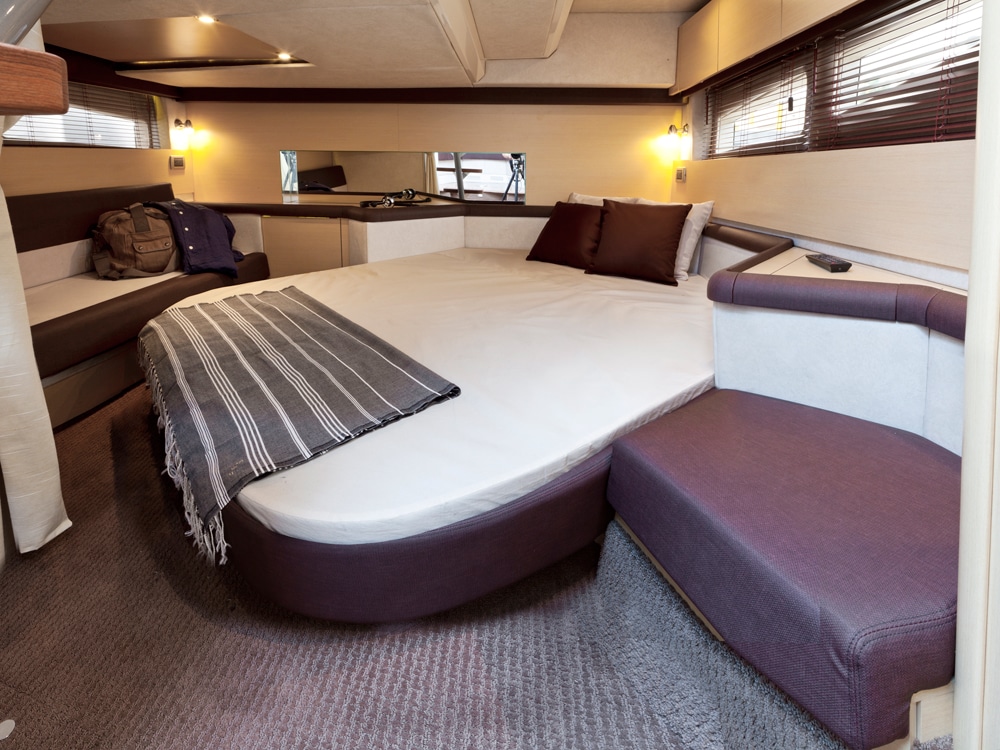
Sea Ray 370 Venture
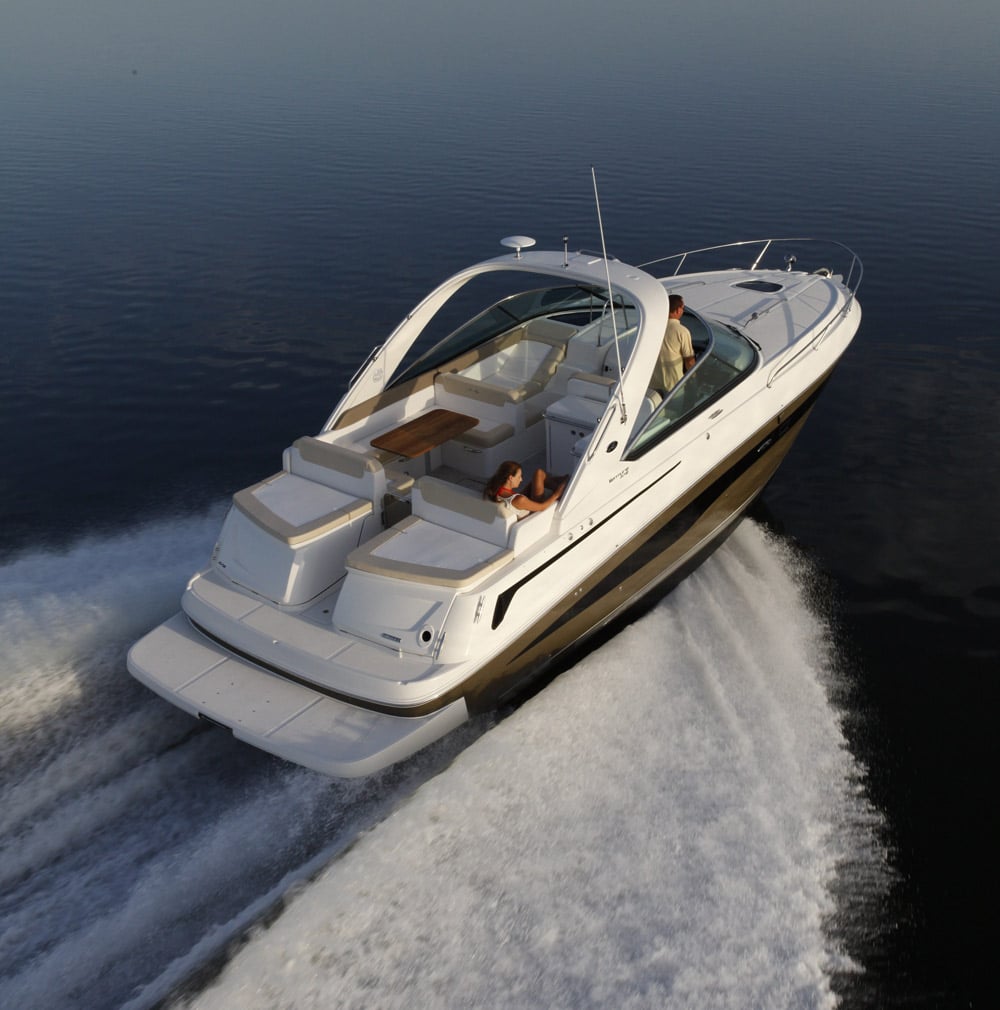
Sea Ray 370 Venture
As surely as wind dictates sea state, propulsion drives a boat’s layout and utility. That’s one reason some boaters decry many boats as being the same. In any given category, most boats utilize the same type of engines: Center-consoles have outboards, go-fasts have sterndrives, and midsize express cruisers feature some iteration of inboard power plant, be it V-drive, pod, sterndrive or straight shaft. But some boats break the mold.
Check out this test of Sea Ray’s 370 Venture. It’s an express cruiser powered by twin Mercury Verado 300 hp outboards. This seemingly incongruous marriage results in a cruiser with some remarkable traits and abilities.
Outboard engines represent the quietest marine propulsion available, and under way, the 370 Venture proved to be the quietest express cruiser I’ve been aboard during more than two decades of testing boats. At 30 mph, it delivered a hushed 74 decibels (dbA), about 10 dbA quieter than other express cruisers of its size — including other Sea Rays, according to our database. For reference, the human ear perceives an increase of 10 dbA as twice as loud.
Outboard power also dramatically affected the 370 Venture’s accommodation plan. Belowdecks, Sea Ray incorporated a master stateroom that extends for the full beam width of the boat. Topside, the cockpit is some five feet longer, as measured between the helm and the aft lounge, than you’ll find aboard traditionally powered cruisers of similar size. Without a pair of V-8s residing below, as aboard inboard-powered craft, and without engines beneath the cockpit sole, as they’d be aboard sterndrives, V-drives or pod-powered craft, the “engine room” bulkhead could be moved aft a bit, increasing the space available in the cabin. And of course, since the engines don’t require access from inside the cockpit, it was a no-brainer to push the aft lounge back and create the wide-open spaces the 370 Venture delivers topside.
With the space under the cockpit devoid of heavy iron, access to equipment like the water heater, generator ($16,500) and standard reverse-cycle air conditioning is wonderful. Mechanics at your yard will fight over the work order to service or winterize this boat’s systems.
Sea Ray retained the signature express cruiser features of a full-width swim platform and an aft sun lounge and settee aboard the 370 Venture. It did so by installing the outboards in wells hidden beneath the aft lounge. Hit a switch and the lounge area rises, providing access to the engines. Close it up and the boat looks just like an inboard-powered cruiser with a centerline walkway between cockpit and platform.
The first thing I checked for when eyeballing the engine installation was whether the engines could be tilted fully clear of the water, allowing easier beaching, shoal draft operation and the removal of the threat of corrosion while the boat was tied in its slip. All of these are advantages over traditional cruiser power choices. Check.
Next, I pulled the engine cowlings to ensure that you’d be able to maintain the engines while they were on the boat and while the boat remained in the water. Check — although you have to watch your footing when pulling the cowls and straddling the cutouts that allow the engines to tilt and trim.
How in hell do these engines breathe? Sea Ray and Mercury worked hand-in-hand to develop custom cowls for Verado engines intended for service aboard a 370 Venture. These incorporate a snorkel — a round tubular fitting — that allows connection of a hose between the cowl and the equipment room (what would be the engine room) that provides the oxygen required for combustion. Neat.
Performance? The engines are mounted on five-foot centers, providing plenty of leverage when you oppose the shift handles while docking: It spun into its slip like a champ. Running, we topped out at 42 mph with a light load and the boat responded with agility to input at the wheel. My only concern is a subjective one: It might need a little more prop once an owner loads a full crew and all his gear aboard. Compared with express cruisers powered by inboards and spinning 18- or 20-inch-diameter props, the 14¾-inch wheels fitted on the Verados did not feel as authoritative during acceleration. Outboard gear-case geometry limits the diameter that can be used. If Sea Ray could marry a Bravo Three sterndrive dual-prop gear case to a Verado outboard, there’d be no competitor that could touch this boat.
Comparisons? Check Intrepid’s 390 Sport Yacht, a lower-slung outboard cruiser with a self-bailing cockpit. Its performance is stellar and its accommodations luxe, though its triple outboards are not concealed and preclude a centerline walkway to the platform. Also consider Pursuit’s soon-to-be splashed Sport Yacht. Its concealed twin outboards allow it to retain the traditional express cruiser aesthetic and transom arrangement.
If you’re a cruiser, or simply a boat design maven, you owe yourself a tour of Sea Ray’s new 370 Venture, inside and out.
Comparable models: Intrepid 390 Sport Yacht, Pursuit Sport Yacht
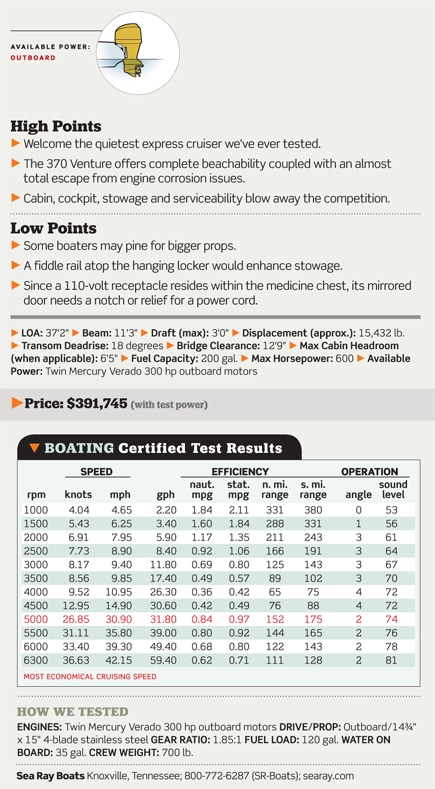
Sea Ray Boats – Knoxville, Tennessee; searay.com

